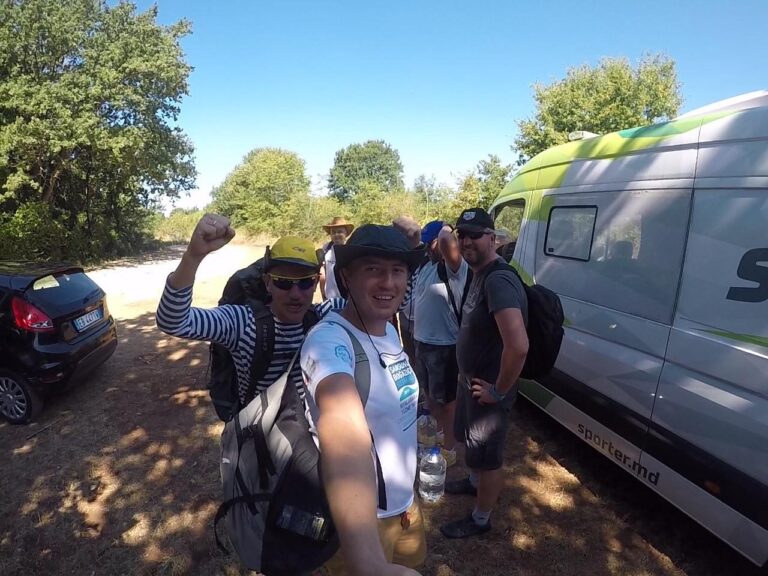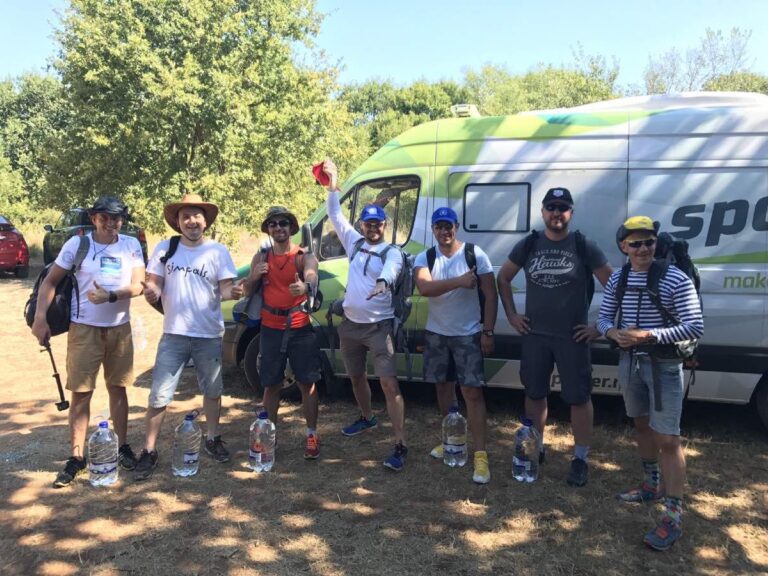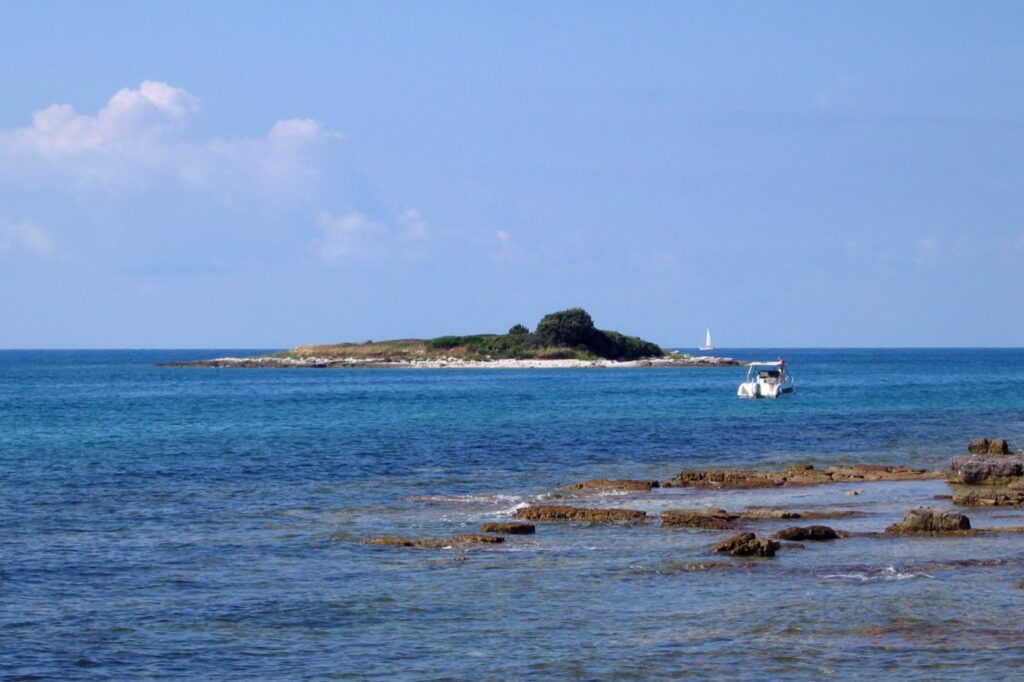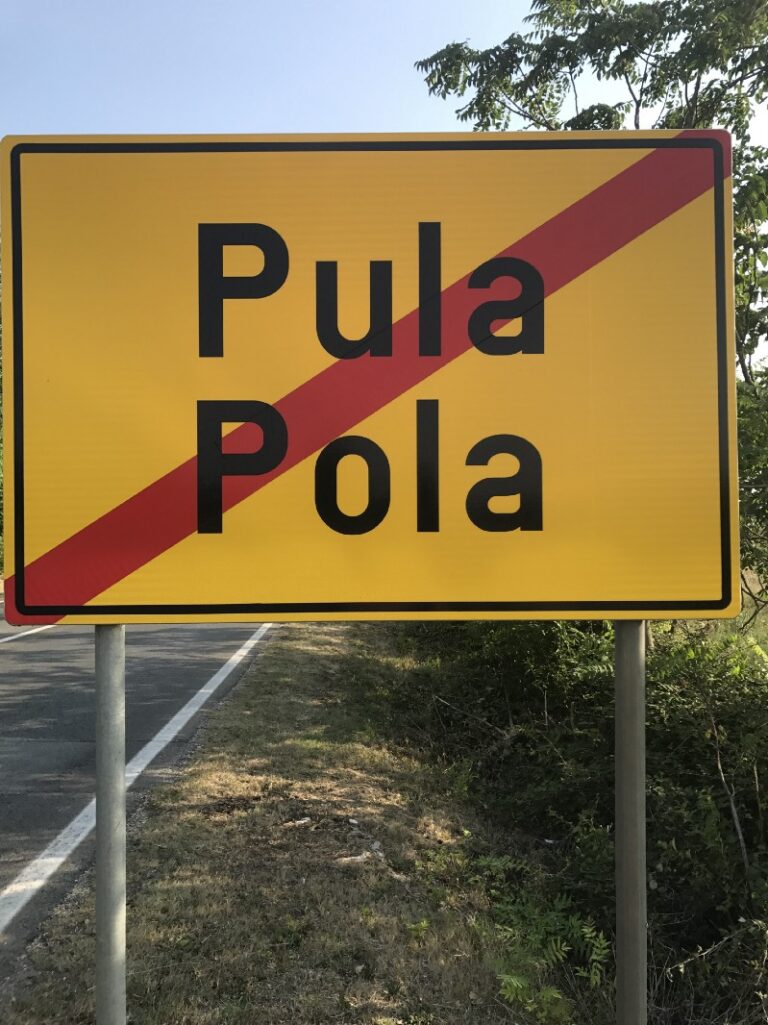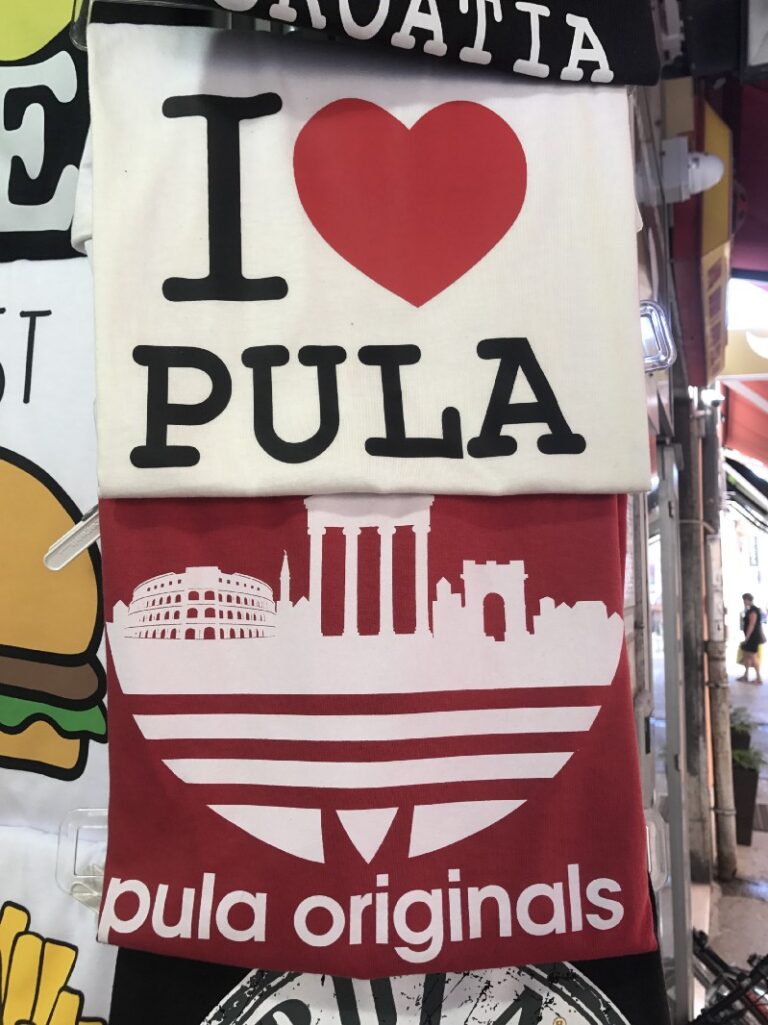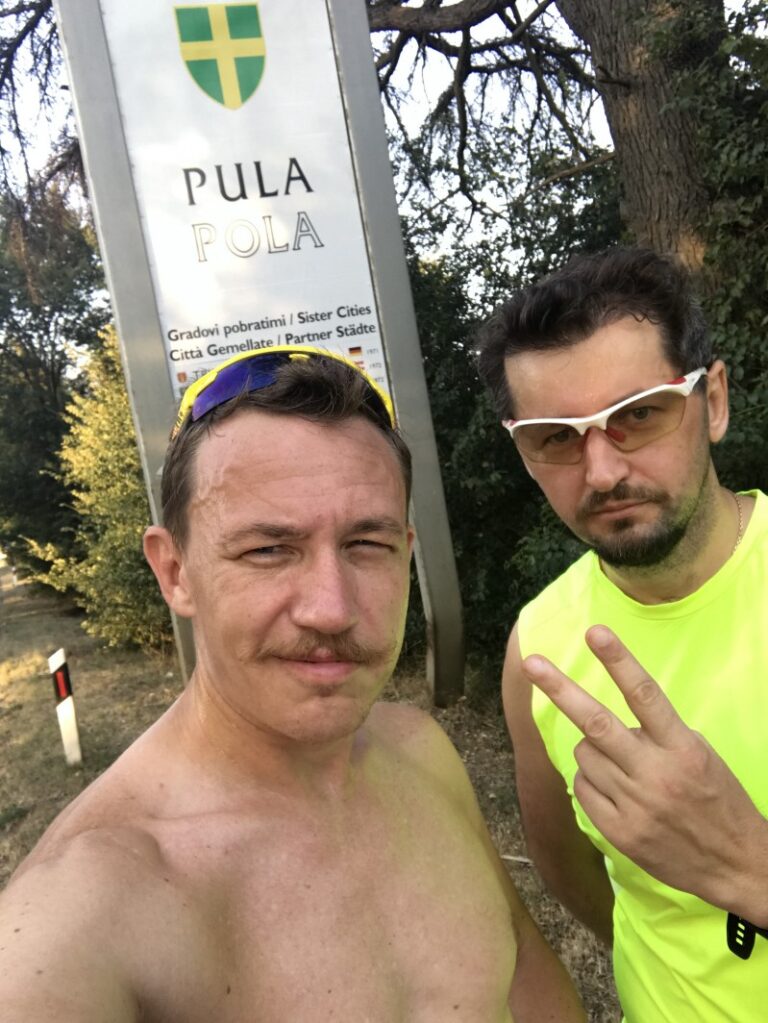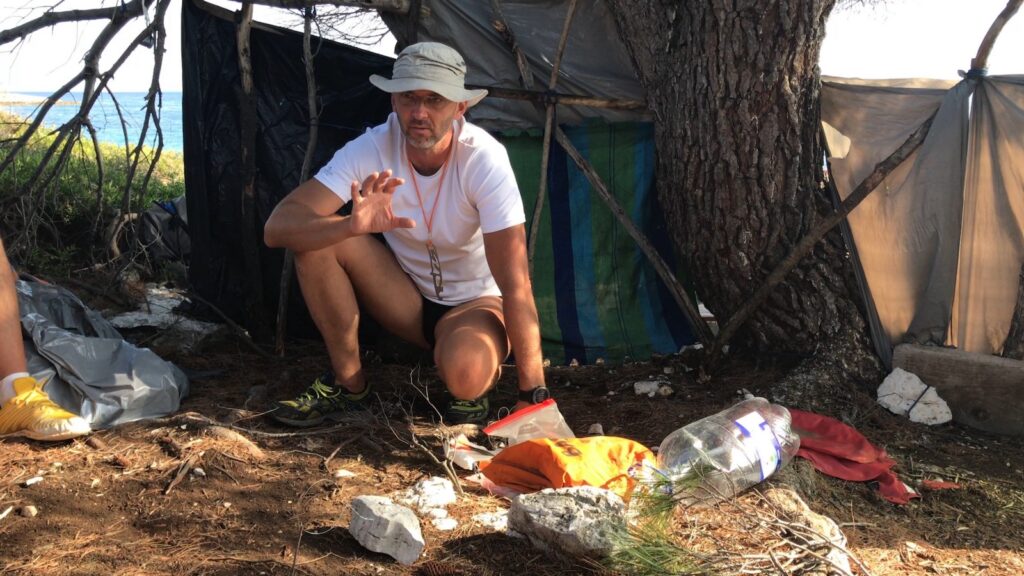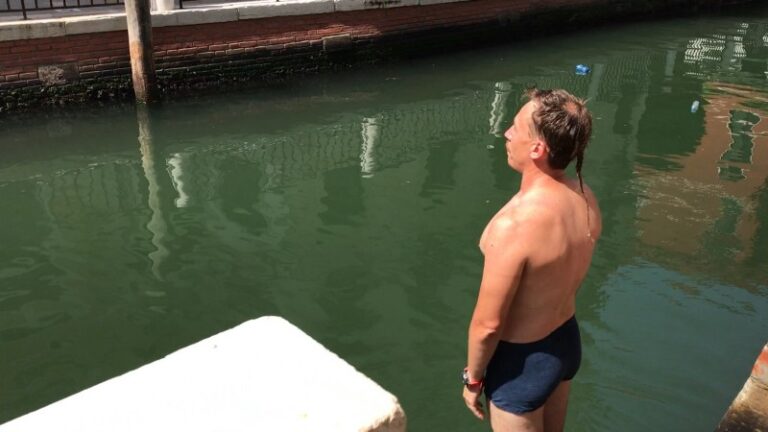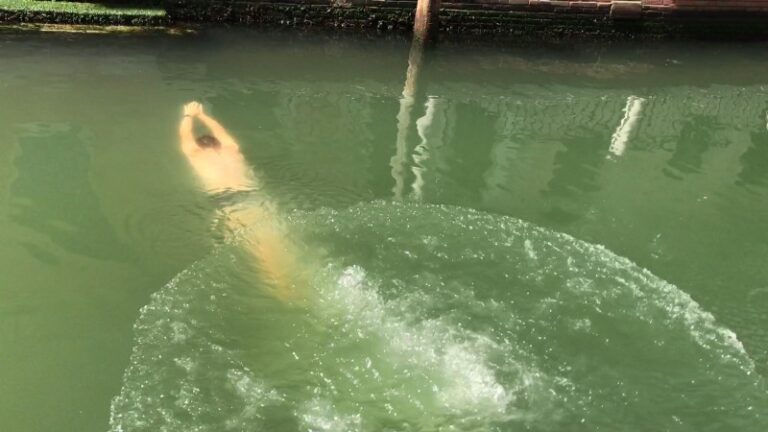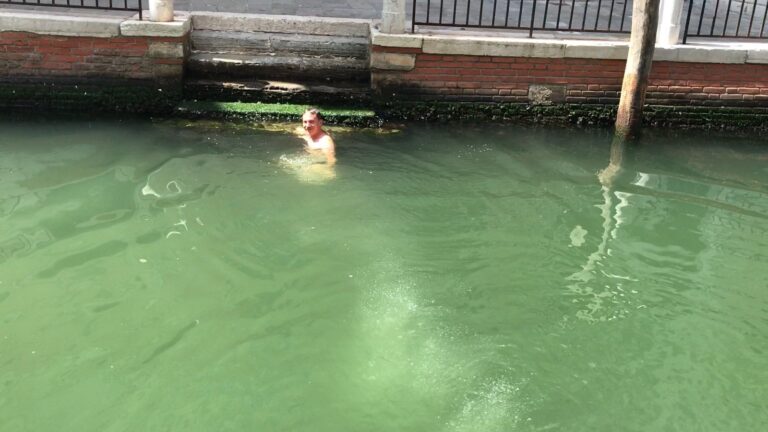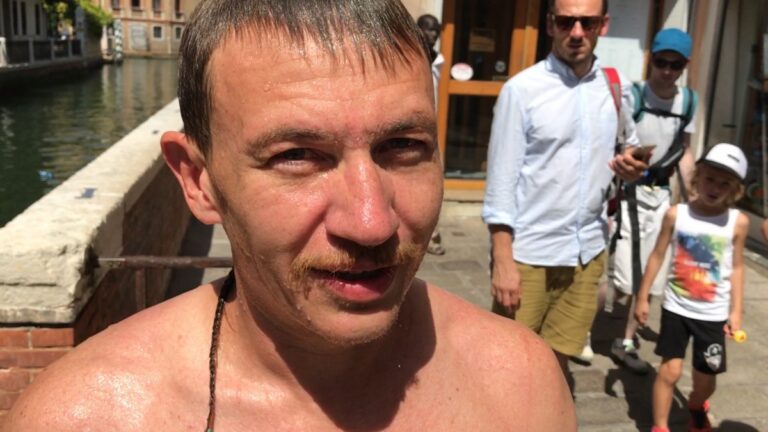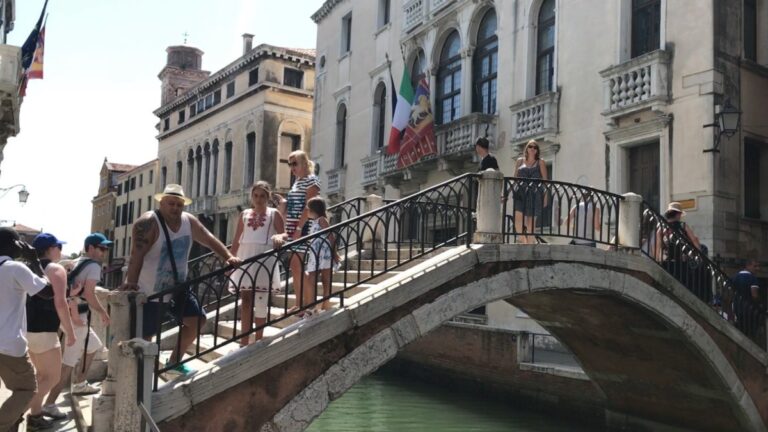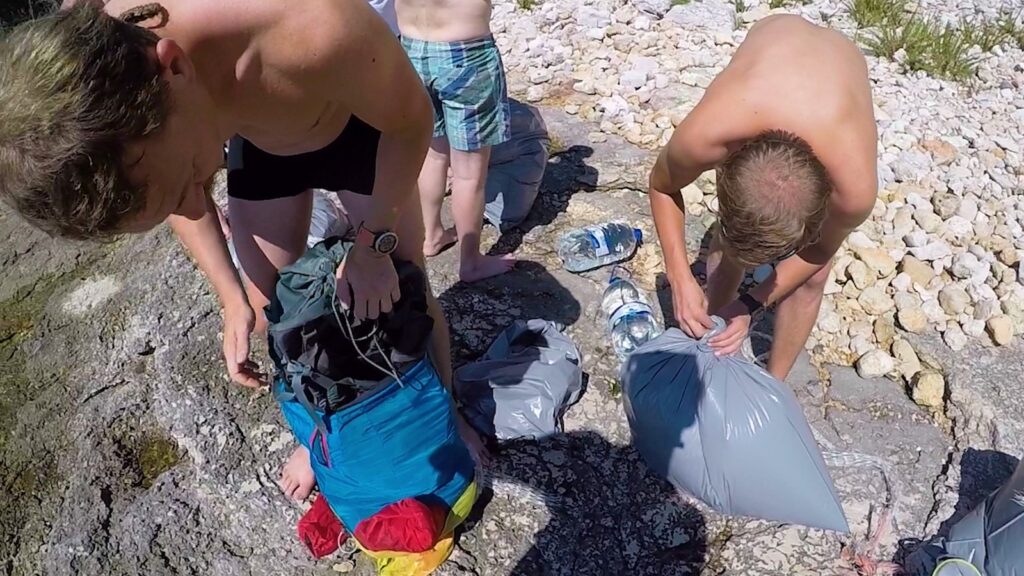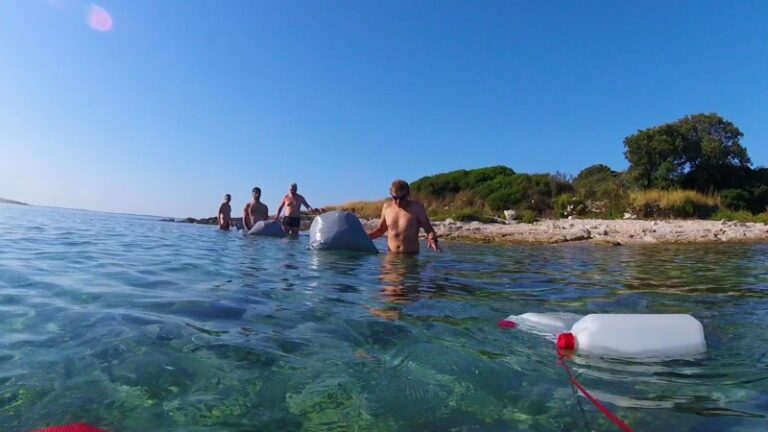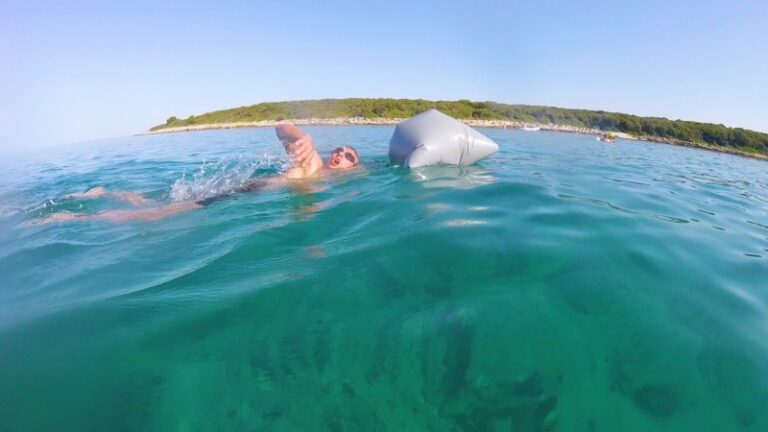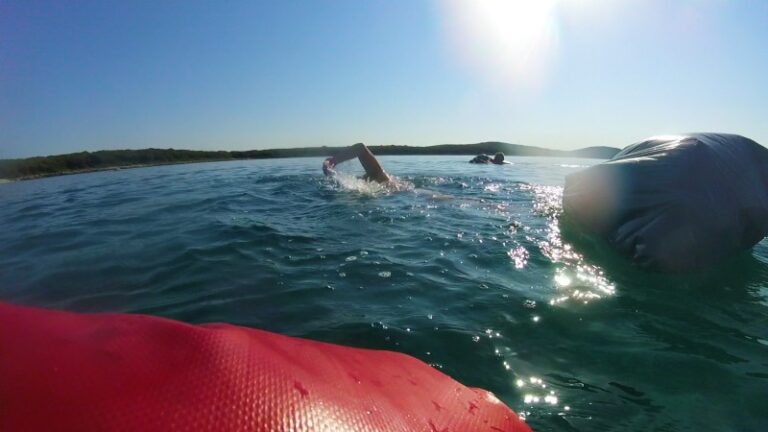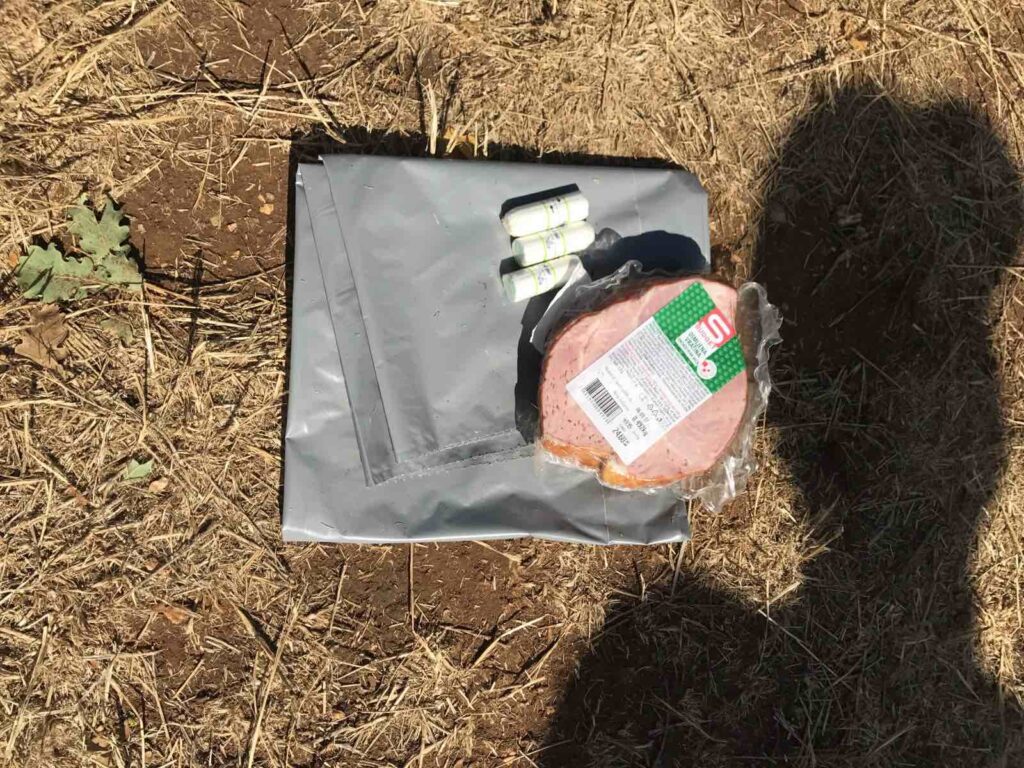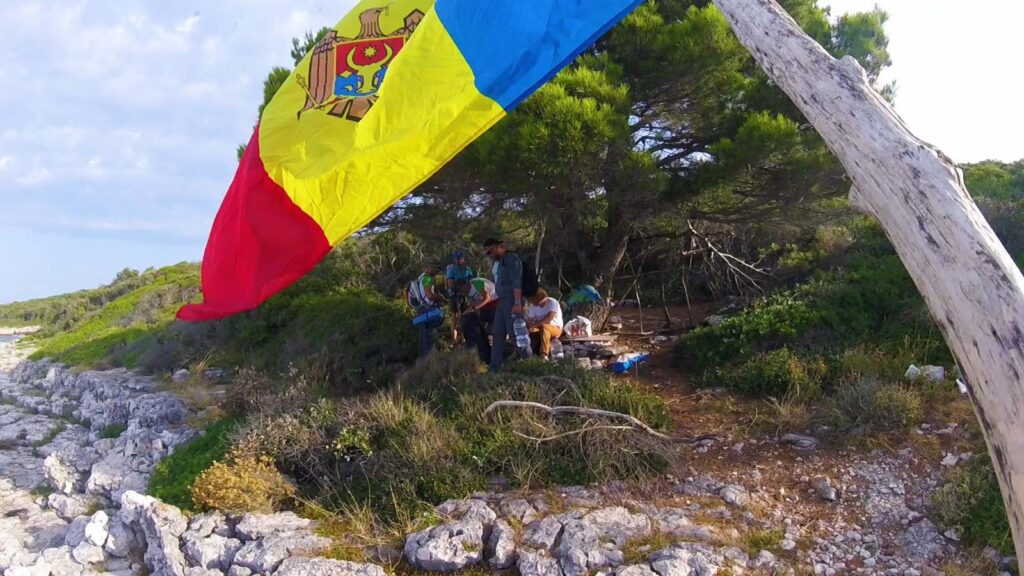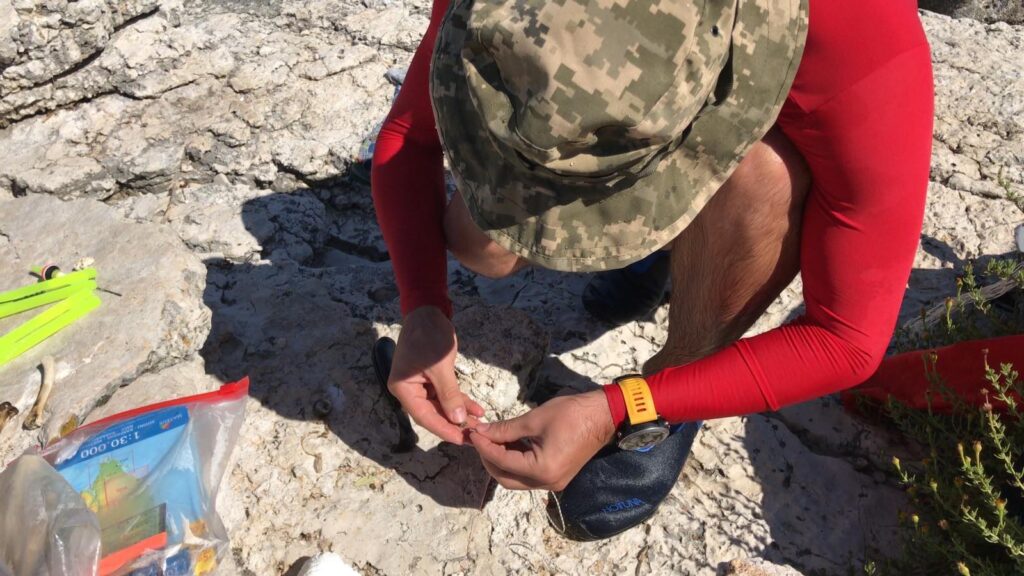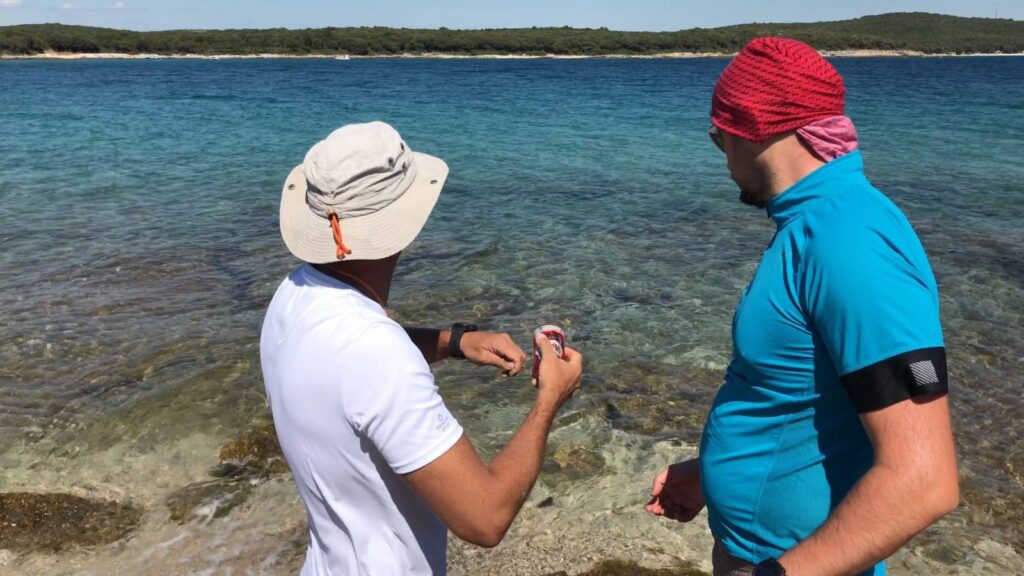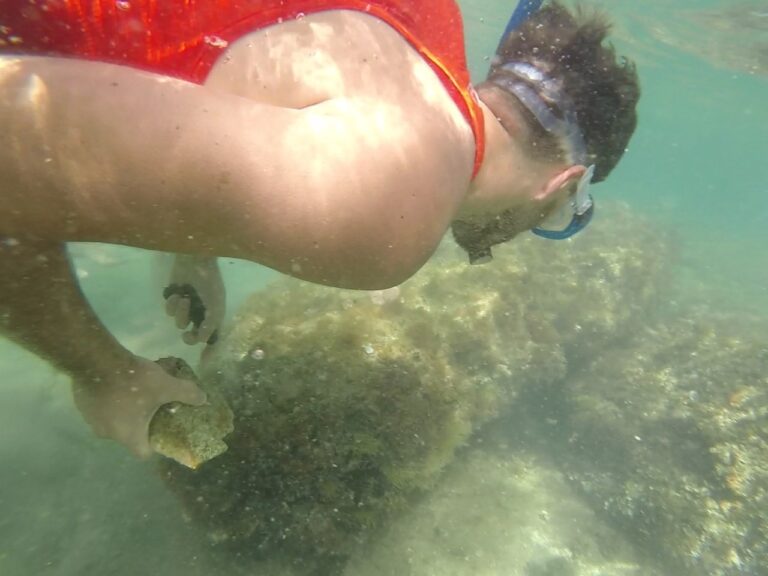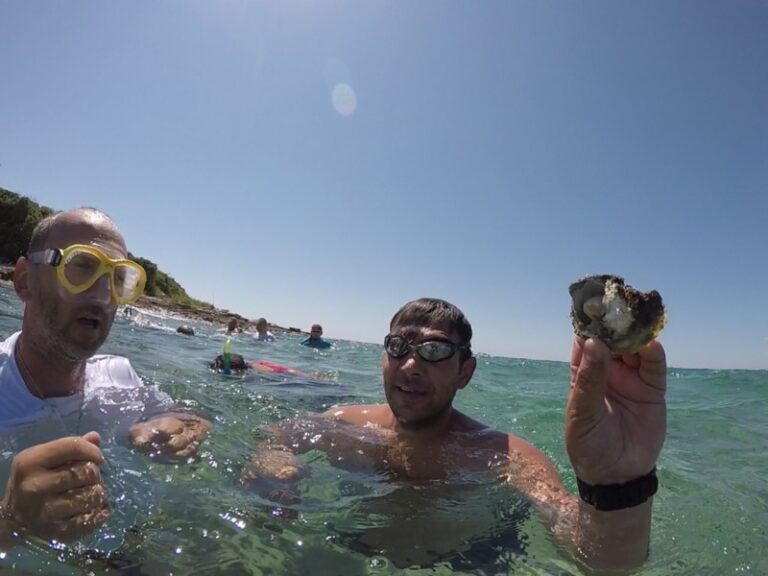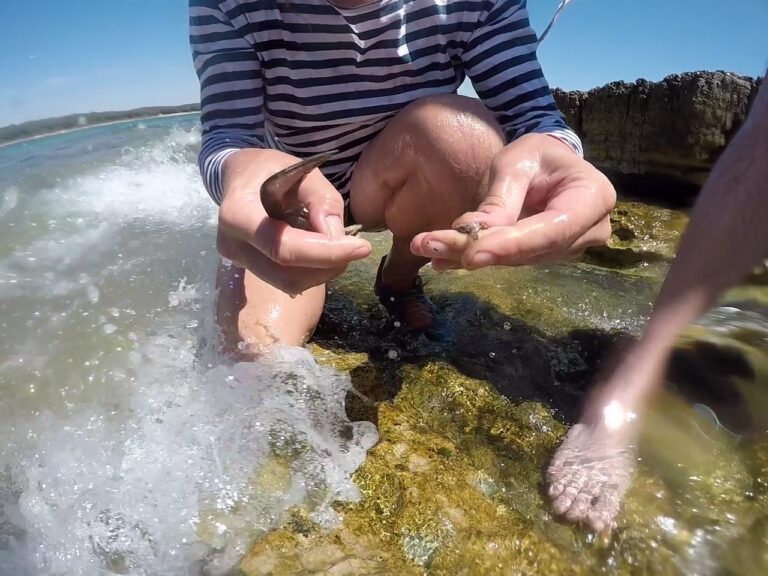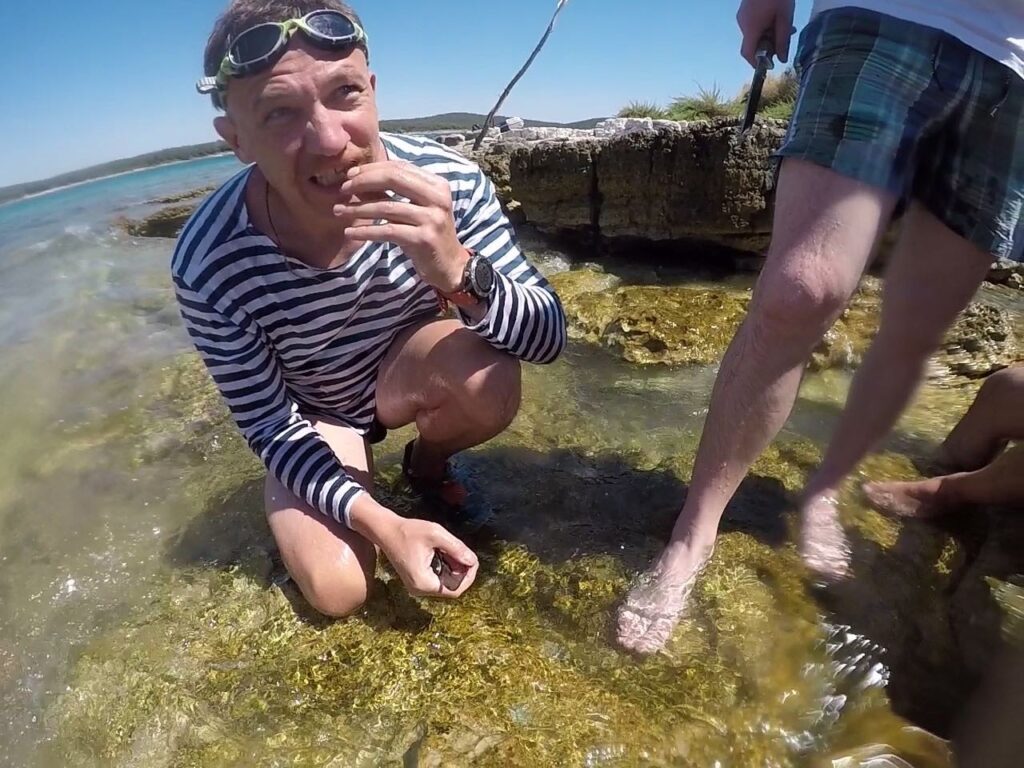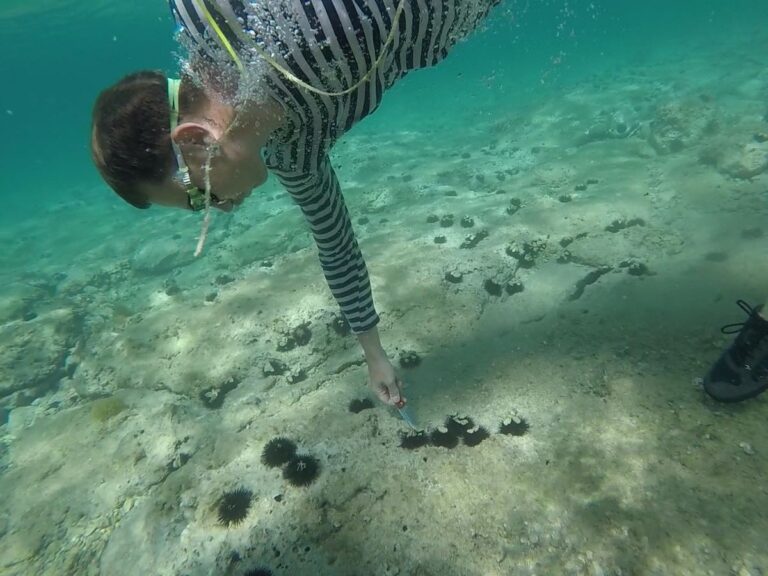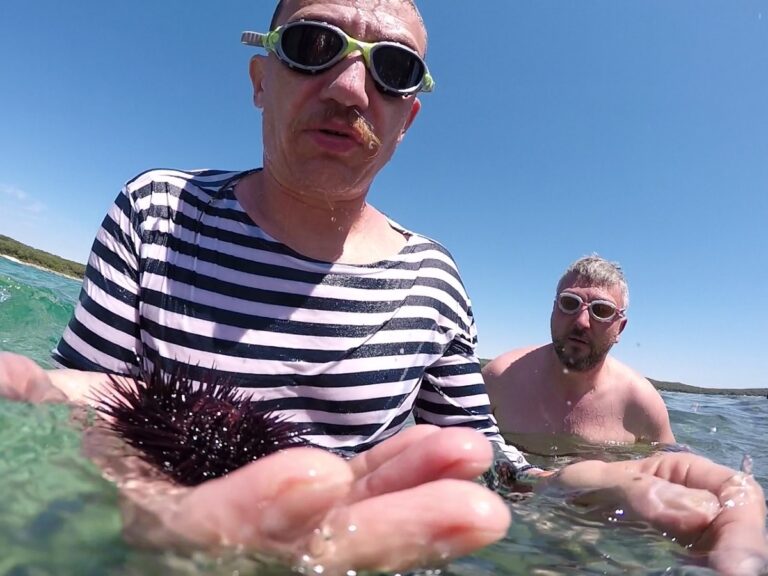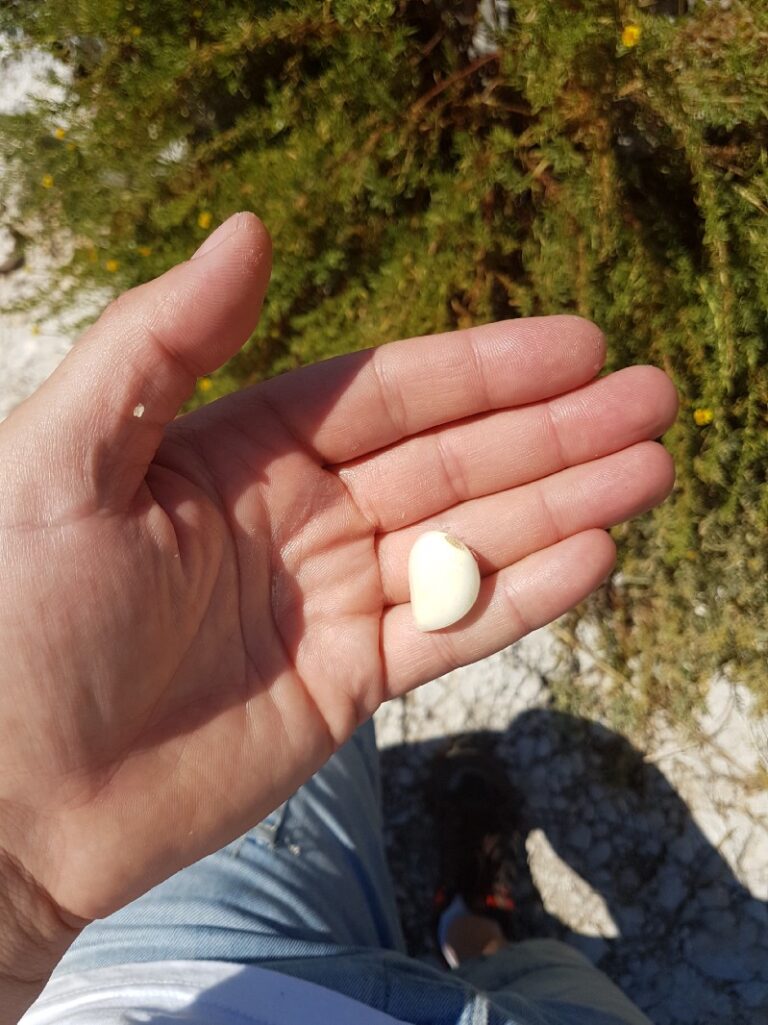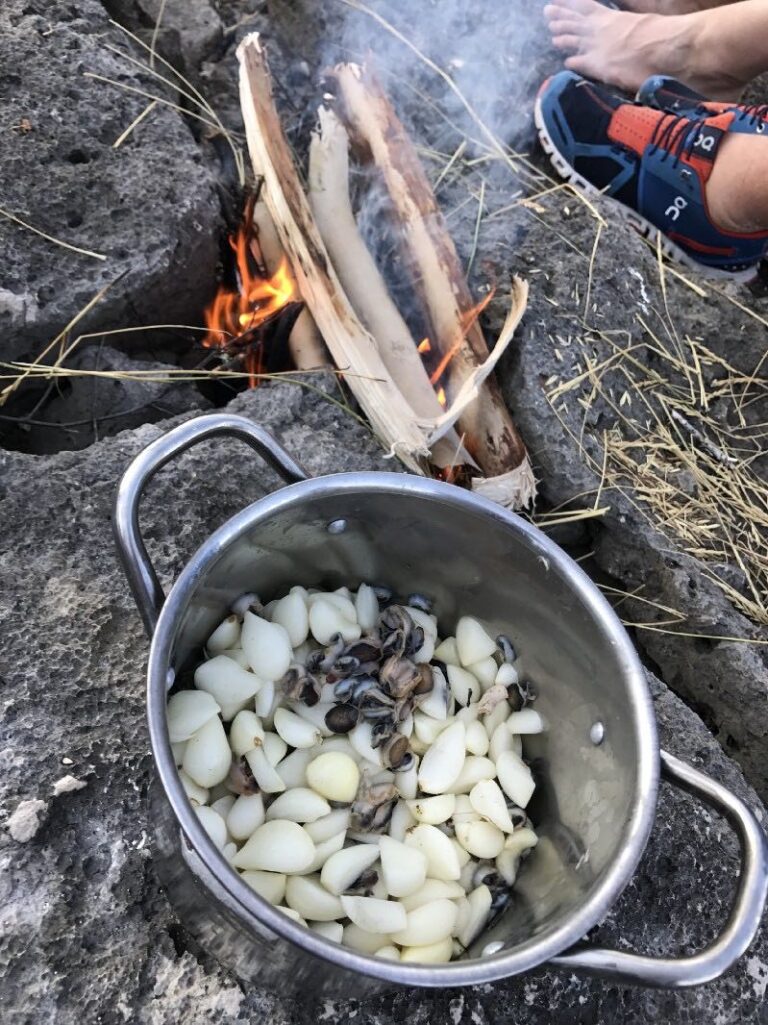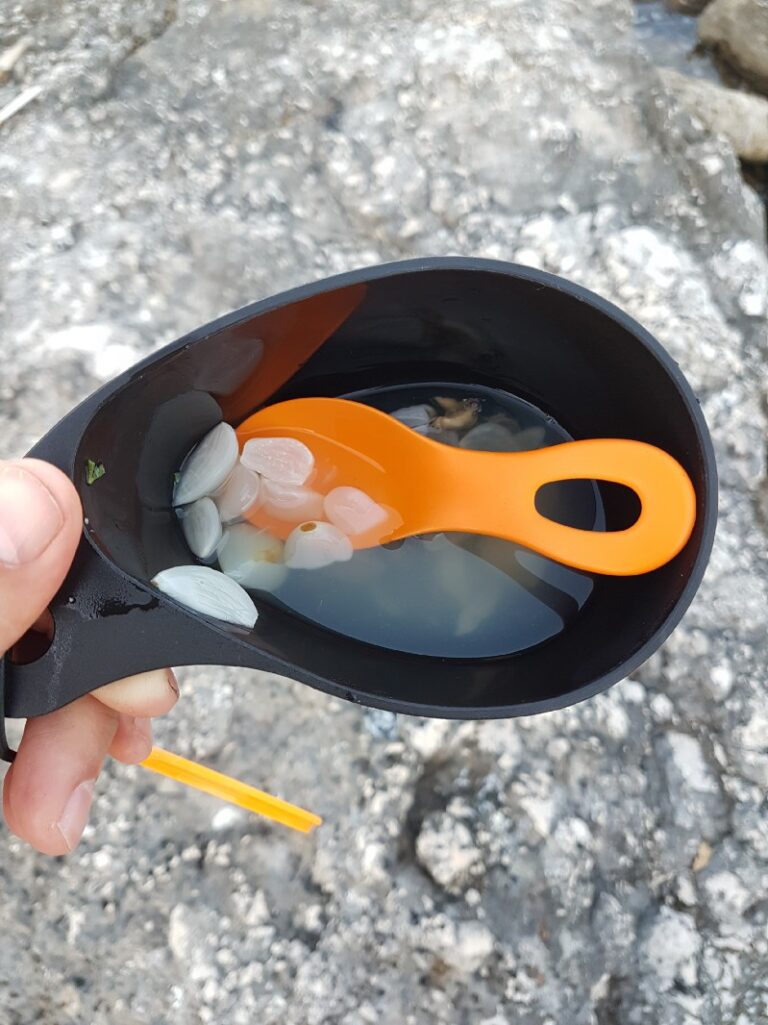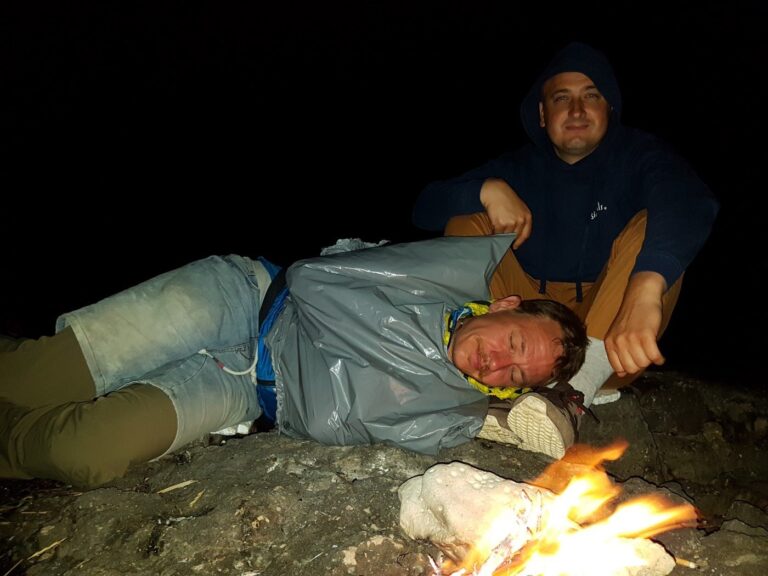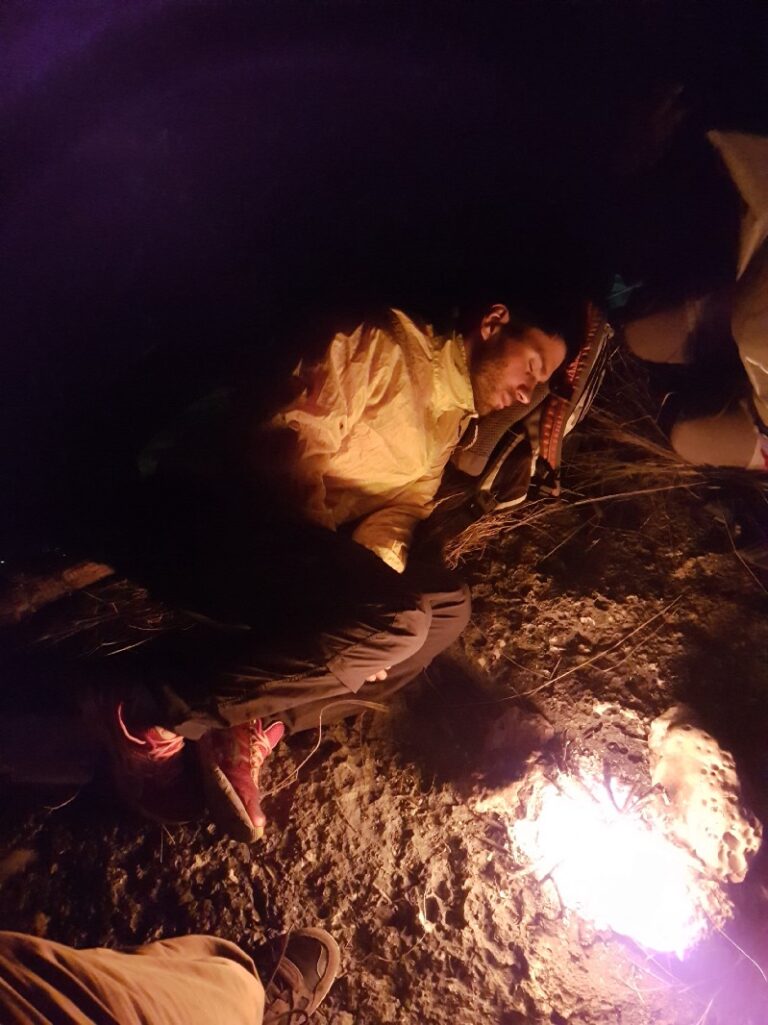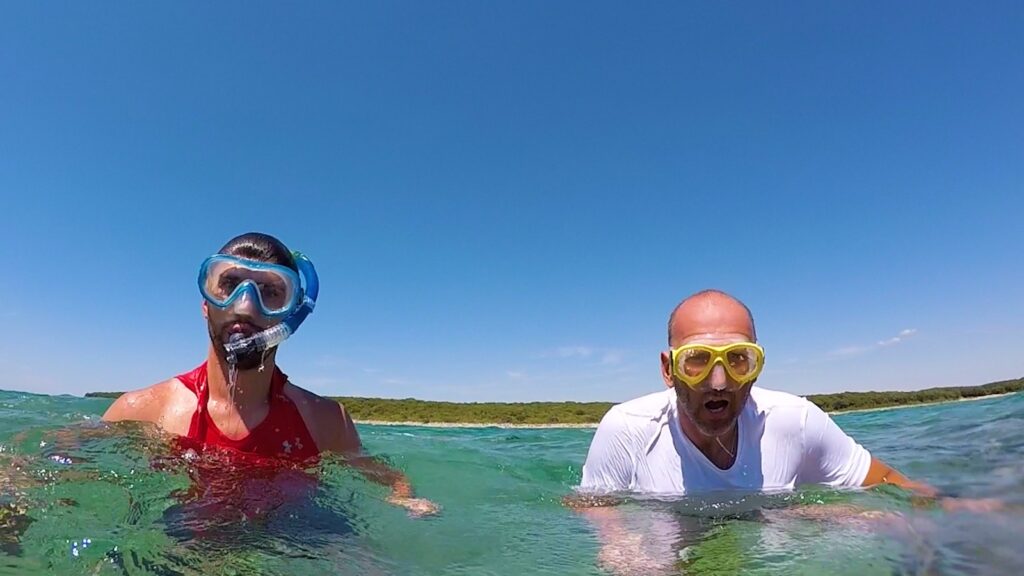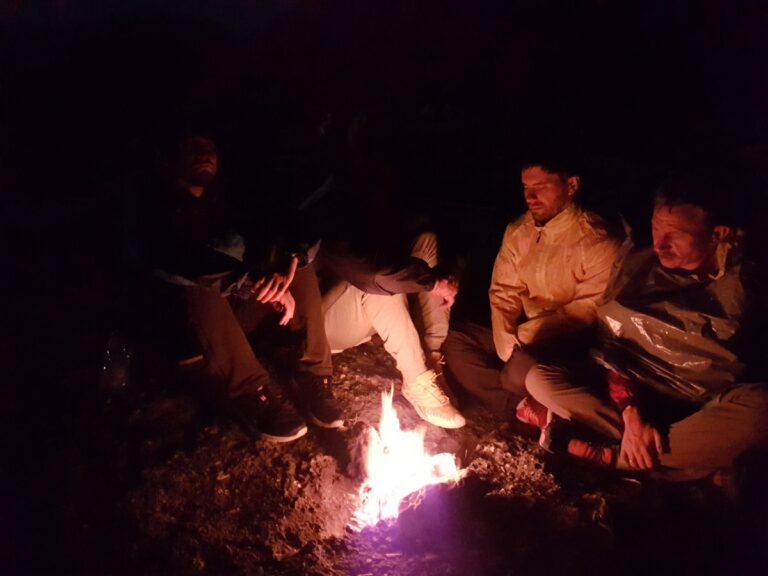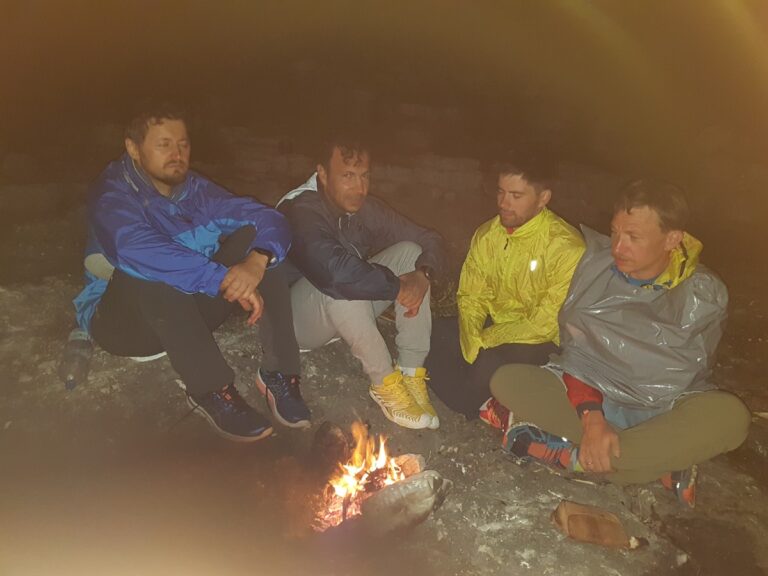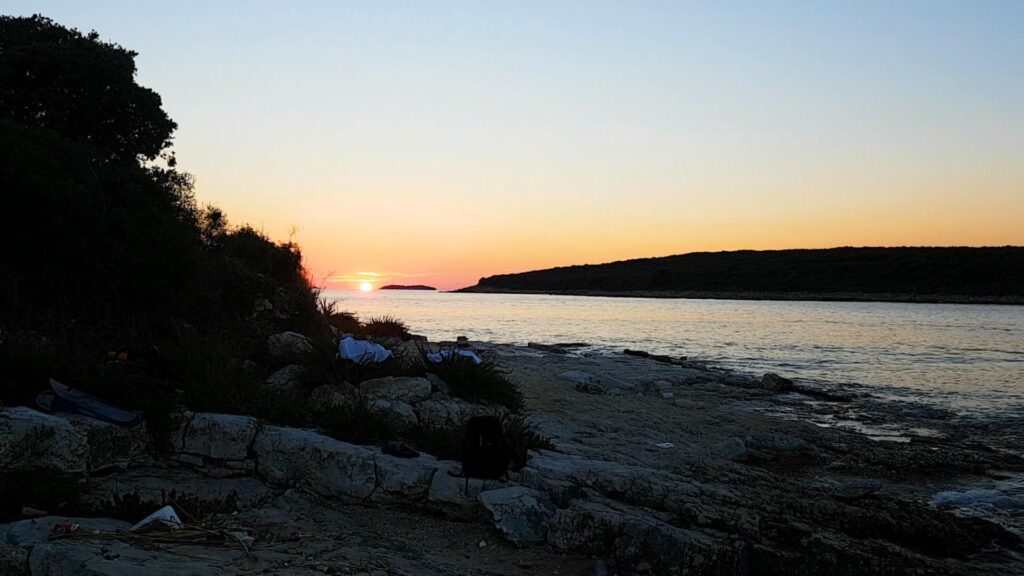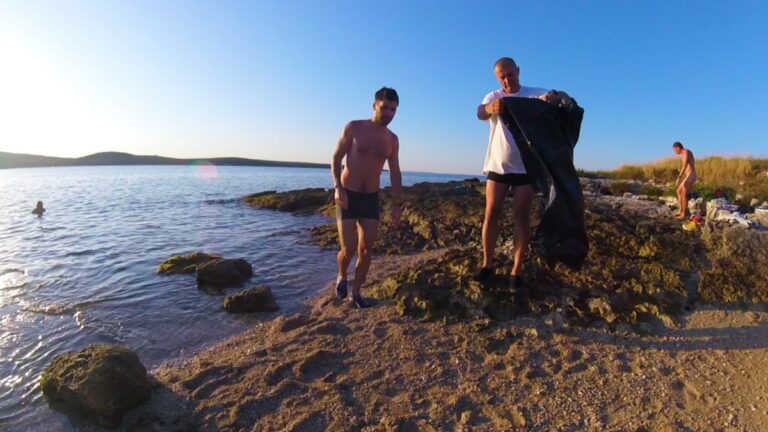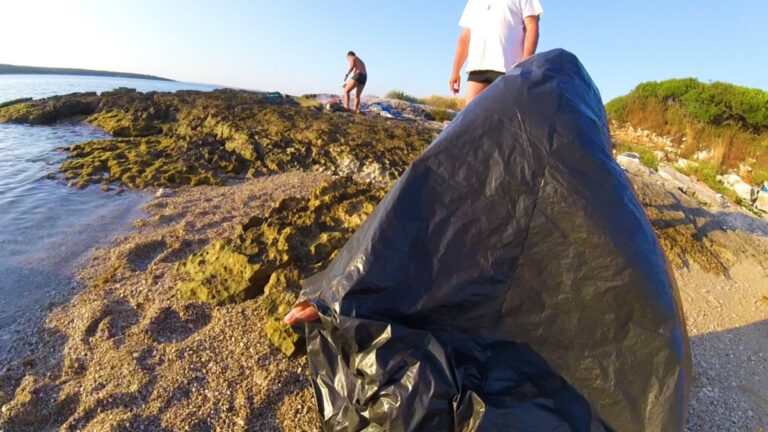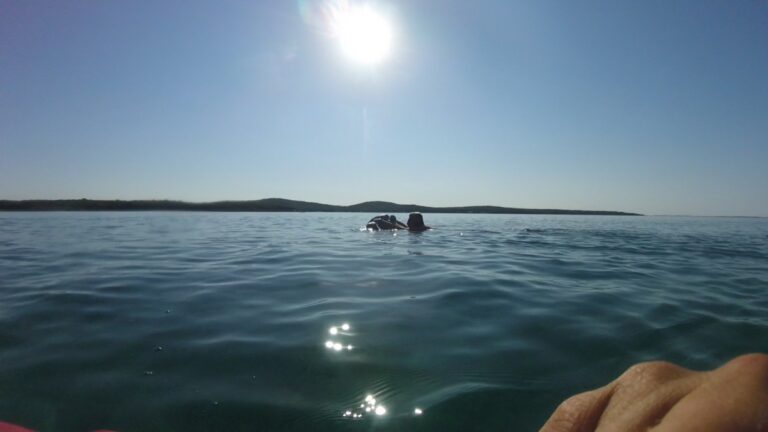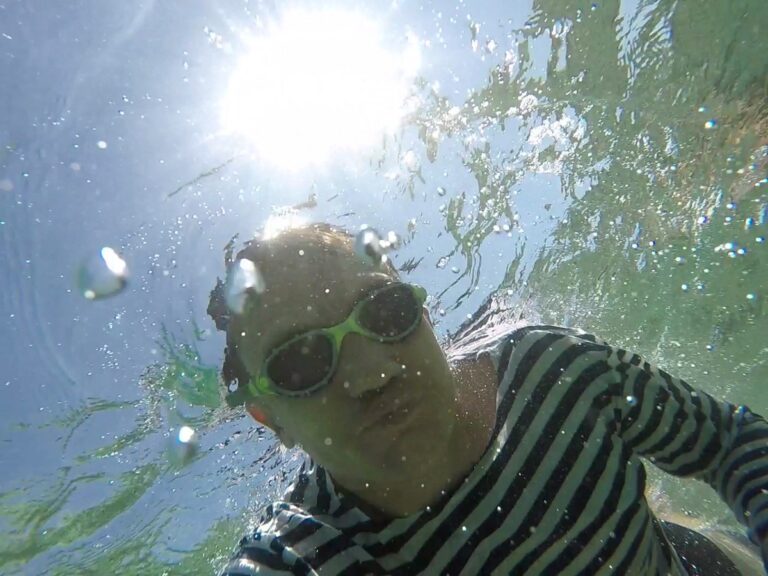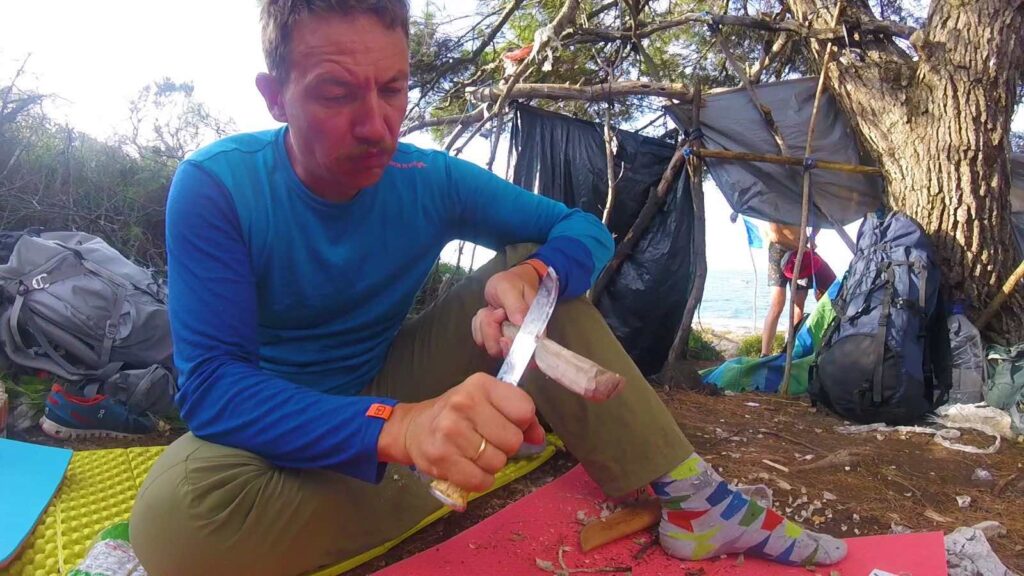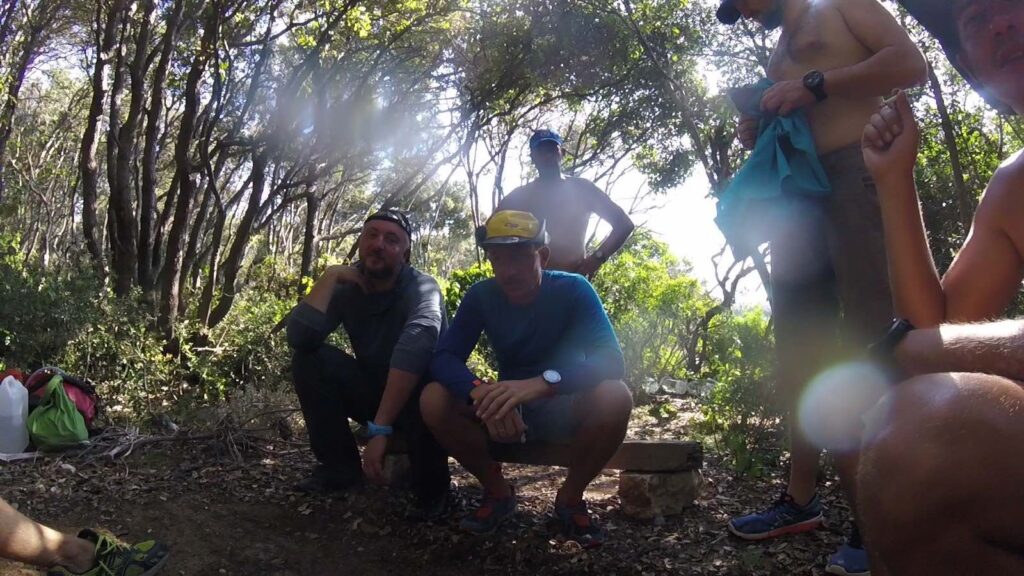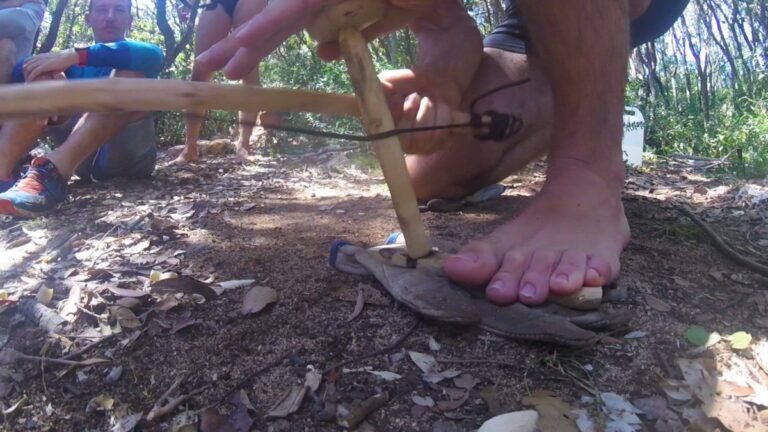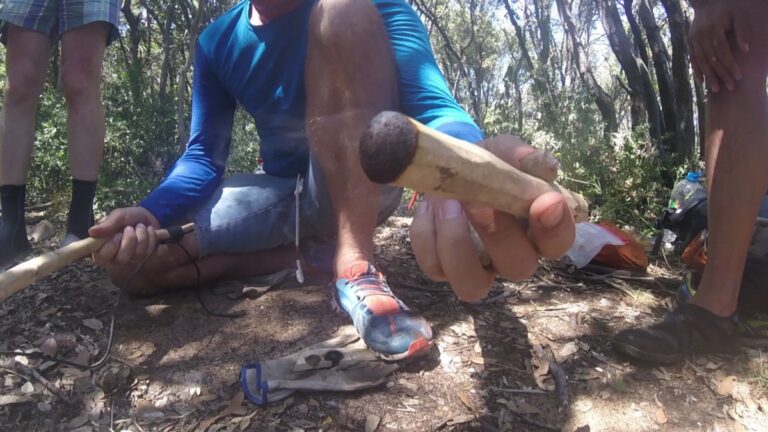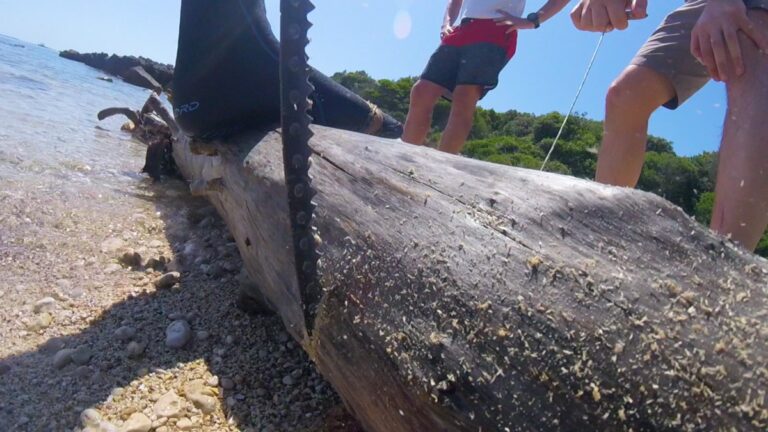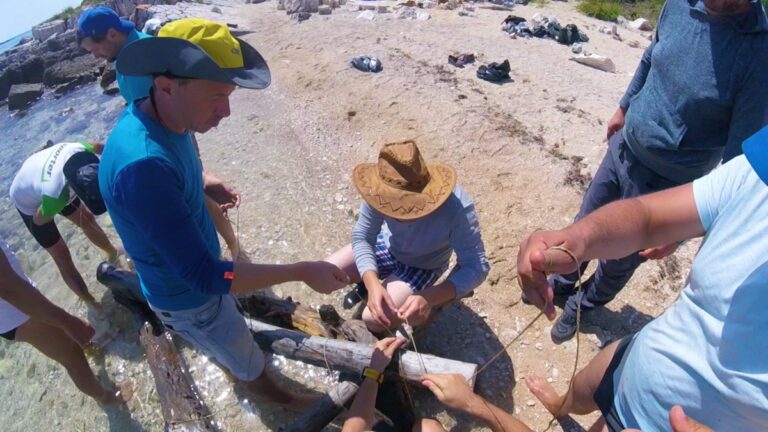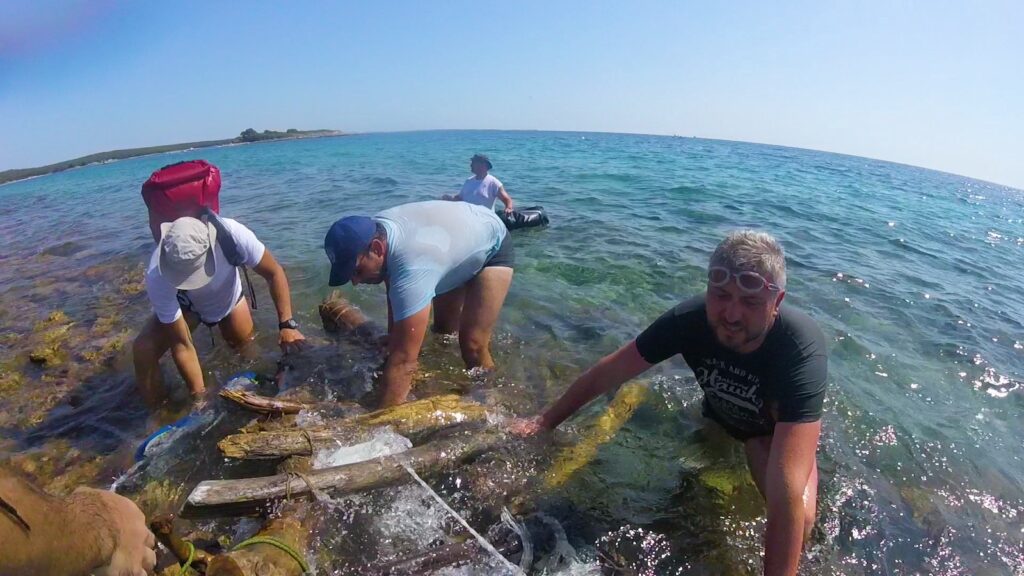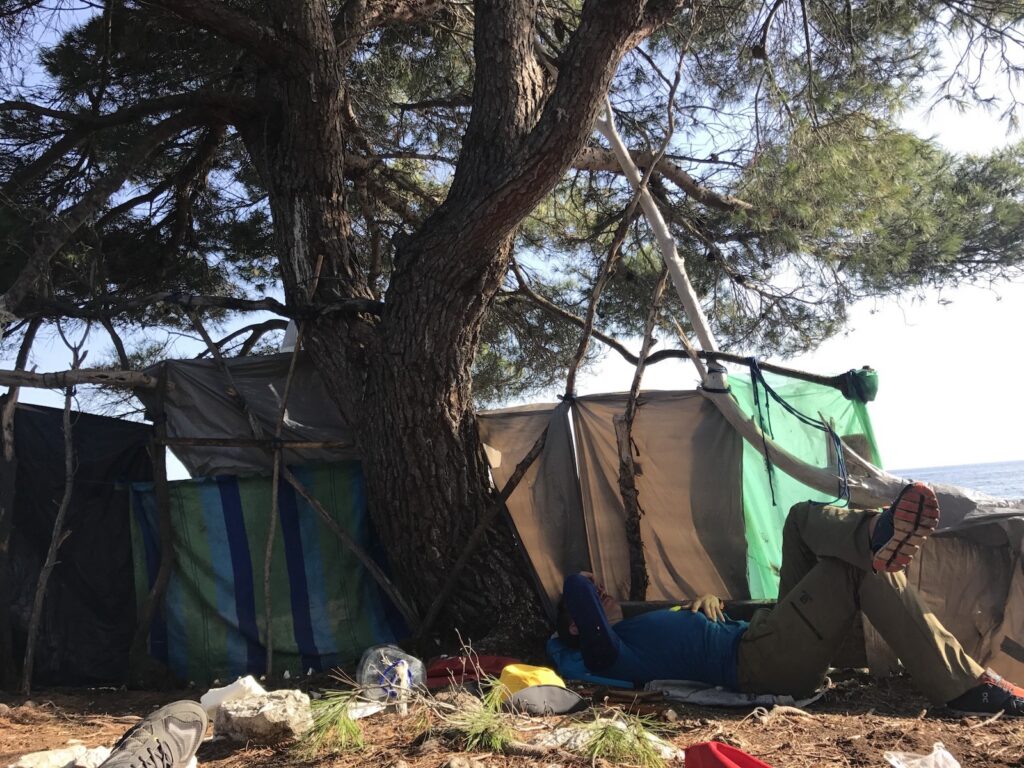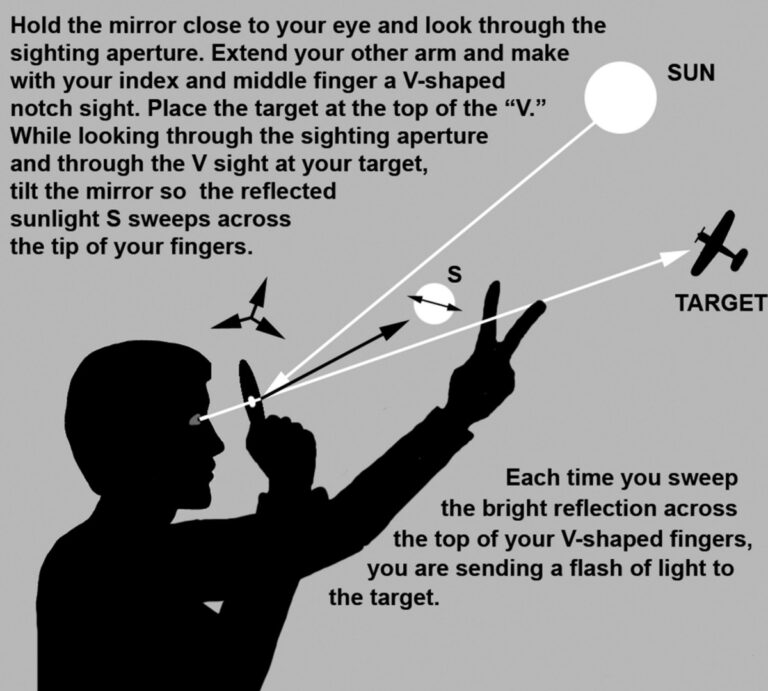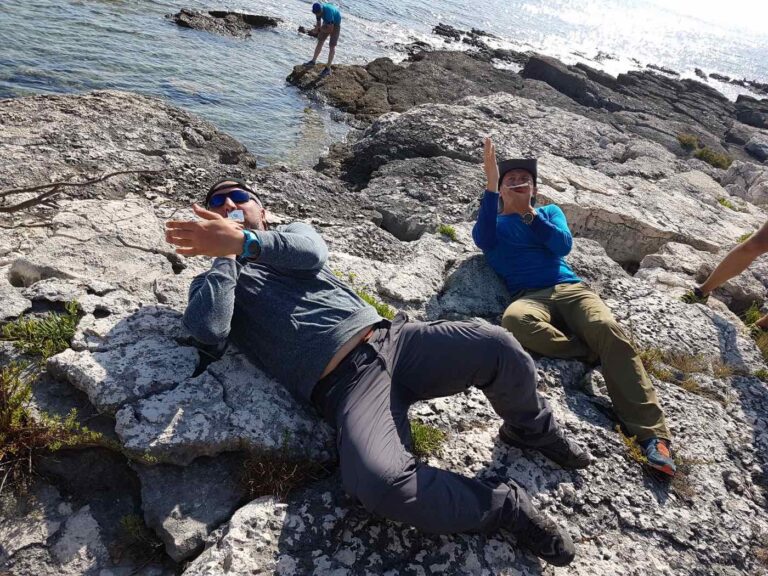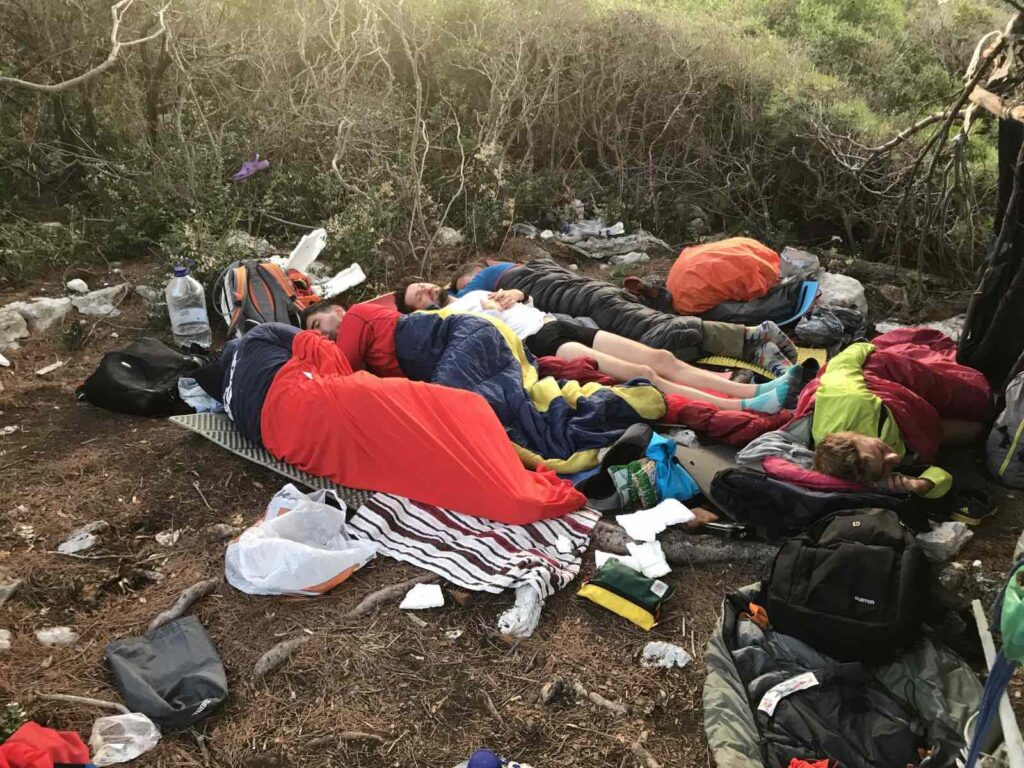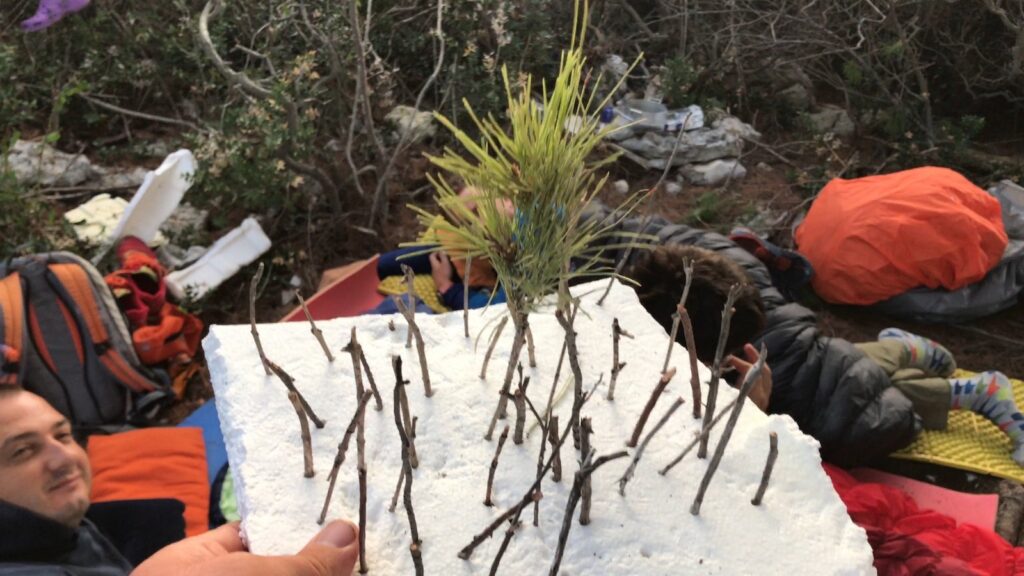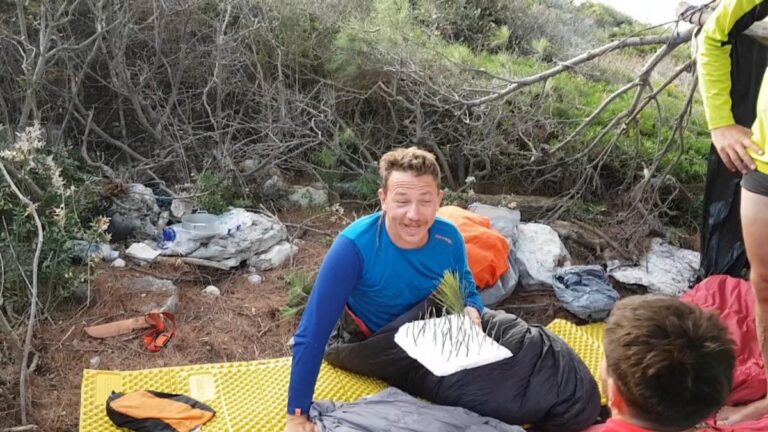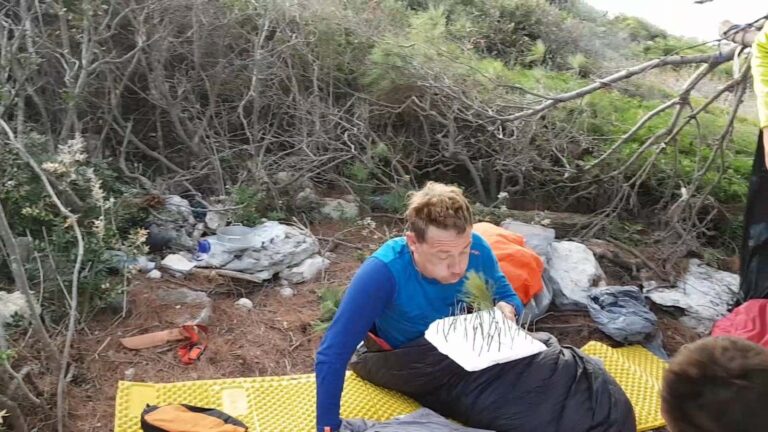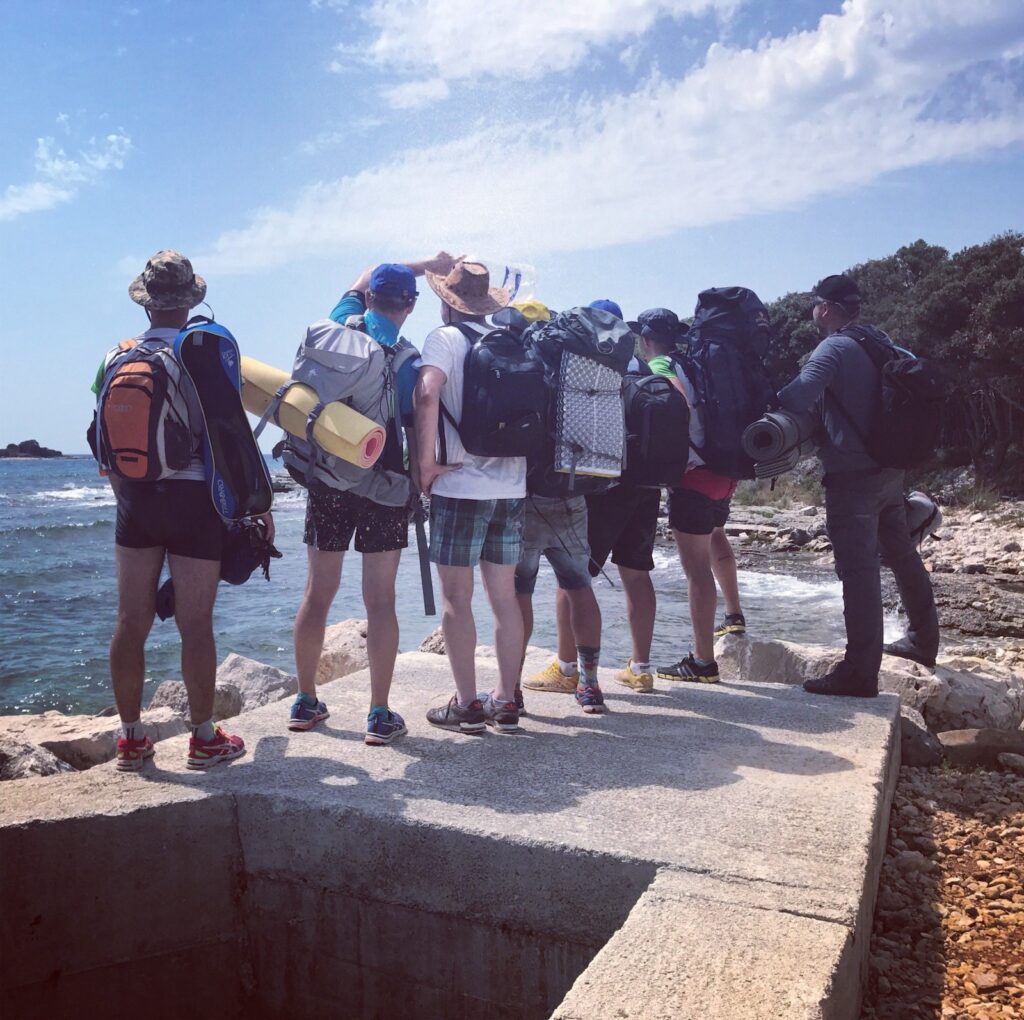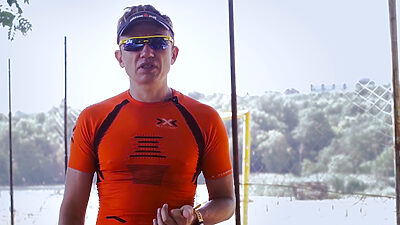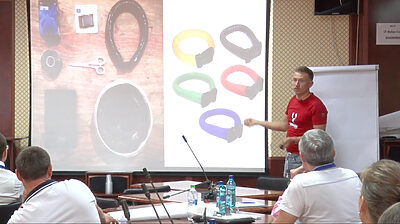Every year at the beginning of August my friends start to worry. Because my birthday is coming and they know that means they’ll have to go God knows where and do God knows what.
The Marathon in the desert showed me that usually we don’t appreciate what we have. That’s why I’ve decided they should go through some tough shit and feel themselves alive.
This year they had to put themselves in Robinson Crusoe’s shoes and go to an uninhabited island to spend there several days without food, beds, toilets, smartphones, likes, with no protection from sun, cold and wind, without all those things that we usually don’t observe and consider them as a given right.
So, we are going to the city of Pula, to Pisulj. Funny one ????
Especially when you’re sitting on a comfortable couch, and don’t freeze at night on the cliffs. And your Pula turns into a Pisulj*…
We don’t travel alone – there’ll be a professional Robinson with us, Boris Stermotić, and his Friday, Dražen Šulc. They will tell and show us how to survive in a place where there is “nothing”.
Before reaching the island, we managed to swim in the canals of Venice, to run in Pula and to bathe on a nude beach. And so did the Day X come.
In Pula we’ve learned some lessons:
Day 1
Lesson №1. How to swim with trash bags?
Trash bags are perfect waterproof containers in which you can keep your clothes while swimming towards an uninhabited island ???? Uninhabited is literally the word – there were only bare rocks and a lonesome tree.
Well, we undressed like that rocks, threw all our stuff in the bags, inflated them (so that they could keep afloat), tied them and swam.
Besides the bags, our instructor gave each of us three tampons. What for? We found out later.
Lesson №2. Bags can let you down.
Our clothes got wet, after all. We must have done something wrong. But we’re on the island already, and we are going to spend three days here. And there is only a single tree here and 200 square meters of earth and rocks.
Lesson №3. How to catch food.
The next lesson, which is mandatory to learn on a desert island, is how to get yourself some food. What was edible there? Well, mollusks, some sort of grass, and lots of rats, mice, lizards. Turns out that the trash (that surely was on the island) could be used for making something for “hunting/fishing”: a bobber (to catch fish), dishes (to eat that fish), also, you can find thread (to knit something), and so on.
Lesson №4. How to catch rats and mice?
You take a simple 1.5 L plastic bottle, …. Well, you can make a pretty good trap out of it, but we didn’t catch anything in it. We haven’t learned it at your instructor’s knees, so we didn’t have a chance to taste them. Turns out mice are smarter than us. By the way, we also couldn’t catch fish.
Lesson №5. Fish should be caught in the morning. Not when you want some all of a sudden.
Lesson №6. How to catch a slippery mollusk?
When you have nearly nothing to eat, some mollusks can quench your hunger. So, how do you catch one? Usually, a mollusk can be found on the part of rocks that’s washed by the waves. You rip it off with a knife; we didn’t have to open them – these were some unusual types of shells with a single valve. So, you just try to take the meat out with your nails. There was very little of meat, like a nail in each shell. So, you keep eating mollusks… and they don’t fill you up. On the evening of the first day we gathered something like half a kilo of these mollusks for each, and made a soup of them.
Lesson №7. How to eat a sea urchin?
Do you know how to distinguish a he-urchin from a she-urchin? It’s very simple. Girls like dressing up – they have lots of jewelry on them, like small rocks, algae and other useless stuff. Boys don’t have anything of these. You eat the caviar out of she-urchins. Something like a nail of caviar. Not more.
Lesson №8. Is wild garlic edible?
Oh, sure! Not only is it edible, but also really sweet! We found 300 grams of garlic and made a veeeery delicious soup.
Lesson №9. How can one distinguish edible things from inedible on an uninhabited island?
No way. You can’t just guess. Sometimes red means it’s ripe. And other times red might mean that it’s dangerous.
Lesson №10. How to choose a place to sleep under the stars?
You should build your sleeping place on the windy side. If you are more of a pantywaist (like we are), you’ll learn how to make yourself a grass mattress. But you should choose rigid types of grass, because if you use soft ones, your mattress can turn into a … . Originally, we were supposed to sleep on the rocks, like ultimate survivors, but turns out this is not about us, so after some time we moved to sleep on the ground.
Lesson №11. How to navigate by the stars?
So, you can determine by the stars where north is, and where are you in comparison to this north. How can you do this? There is a constellation, called Ursa Minor, which includes the Pole star (or Polaris). This star never changes its position not only during the night, but also throughout the year. In a word, you find Polaris and you know for sure where north is
And now, how do you determine east and west? You need a stick for this. Aim it like a gun straight to Polaris, and leave it for an hour. The direction where the stars have moved is east. That’s all the science ????
Lesson №12. The rule of maximum and minimum.
It’s very important to keep in mind that you can not waste more than you gain. Which means mollusks are perfect in this matter: you just stay in the water without moving, rip the shells off the rocks and eat them.
What else should one know on an uninhabited island?
Lesson №13. How to filter water?
As the island is uninhabited, it’s very popular among seagulls, so the sources of drinking water smelled not really good. Our instructor insisted that we should boil the water – seagull guano contains lots of parasites. And now it’s time to find out what do you need tampons on an uninhabited island for. So, we figured out a way of using tampons. You can stick it in the neck of the bottle and filter water.
Lesson №14. How to make a fire?
By nightfall, even our instructor was surprised that it was very cold. We had to make a fire. And that’s where we needed the tampon again – it burns really great! Special thanks to Dorin for maintaining the fire all night long, so that the rest of us wouldn’t freeze at night.
Day 2.
In the morning, before the sun came up, our instructor invited us to a water lesson about hypothermia.
Lesson №15. How to freeze in the water?
What is a hypothermia lesson like? You throw your frozen limbs into the water, and stay there without moving to turn into a white walker. When the shivering comes, you get out on the shore, put a (ta-dam!!!) trash bag on, and after 5 minutes you’re warm and happy.
Lesson №16. Now, how to get warm in the water?
But you can also get warm in the water. While being in the water, cross your legs, hold your arms on the chest in a cross, and put your palms under your armpits – this is the position of heat preservation in water. I promise you, after 15 minutes the water around you will get warmer (and not because of what you’ve just thought!) and you will warm up. (The peeing method also works good, but now you know one more! )
Lesson №17. How to save a drowning man?
Let’s speak about drowning people. The first thing to remember is that a drowning man is dangerous. Because he’s panicking – he’s drowning! Self-preservation is on, so don’t swim directly up to a drowning person. Keep a distance of 1.5 meters. And from this safe distance, give him your hand. Wait. As soon as the man reaches out for your hand, turn him on his back in a quick movement and grab his neck (hold his neck with your forearm, but do not smother him, he’s already choking). In case the drowning man is too panicked, our instructor allowed us to hit him a couple times, so he can come round. Otherwise, both of you may drown.
That’s it. Alright. Water lessons are over. By the afternoon of the second day, our instructor sent us in the woods on the coast. Knife is next on our plan. The instructor explained us what should a right knife look like.
The blade of a right knife passes through the entire tang – in this way it definitely won’t break. Also, we found out that knives don’t like saltwater, because you have to clean them after each contact with seawater.
Let’s go ahead. How to survive on a desert island? If you have a tampon, it’s easy. At least you won’t freeze.
Lesson №18. How to make a fire?
There are 4 types of branches, which you should throw successively into the fire, and if you know them, you’ll be able to build a fire really fast. What has a tampon to do with all of this? Tampons ignite very fast, so, if you don’t know a thing about branches, but you have a tampon – you’ll make a fire.
We’ve learned how to start a fire by friction. You make a bow using a thread and a flexible branch, make a loop and put an another branch in it. This way, pressing the branch to a wooden surface and moving the bow back and forth, you make this branch spin, as it’s in the middle of a loop. And then it’s a matter of time, because friction is unpredictable. We’ve made fire! It took us 4-5 hours to make the bow.
Lesson №19. How to build a raft?
We had to get back to the island, but our trash bags were damaged, so we had to build a raft in order to keep our clothes dry. (?)
We found a lonesome tree on the island, build a shelter near it and fell asleep. After two hungry days spent under the sun we were a little bit exhausted, and our spirit was running out, too.
Lesson №20. Help signals.
To boost our morale, the instructor said we should send a distress signal, and maybe someone will come after us ???? And taught us how to send a SOS signal on great distances, using a small mirror with a hole in the middle. Looks like this:
But there was no help. And in the evening he told us to grab our sleeping bags, which we refused to use at the beginning of the course. Seems like a stupid decision now.
Day 3.
My birthday was on the third day of our stay on the island. I can remember one time I’ve spent my birthday on the top of Montblanc. This time I was given a nice cake made of trash. Happy Birthday to me!
We were reminded how to navigate by natural signs: tree crowns are more voluminous on the south side, a piece of magnetized metal directs the leaf to north, and so on. After this, he put his finger on a map and told us to go there and take a picture.
6 kilometers is nothing, we thought, and made 10. After 2 hours we found the point, took a picture and went to the microbus, to go back to the civilization.
And there was a nice gift on our way to the microbus – Coke! A cold, refreshing can of Coke for each survivor ????
